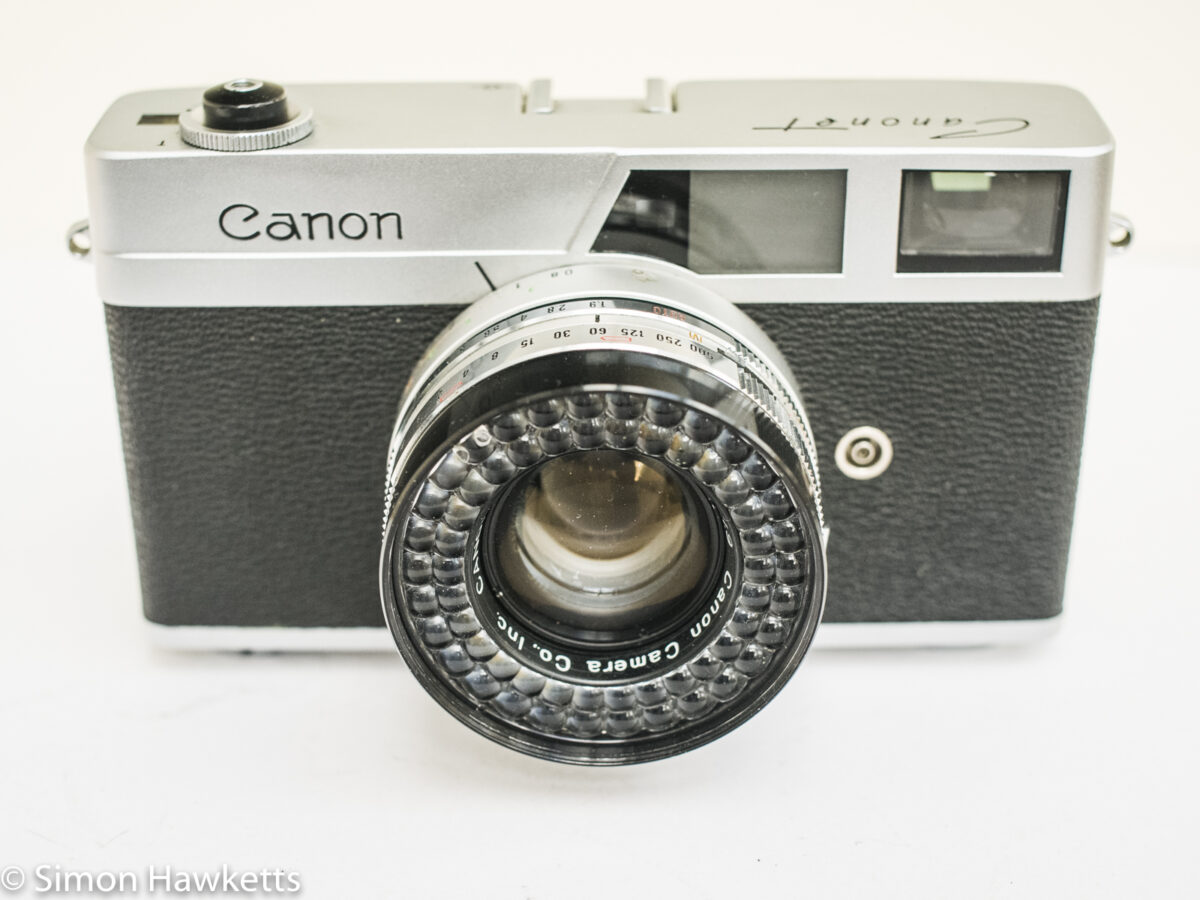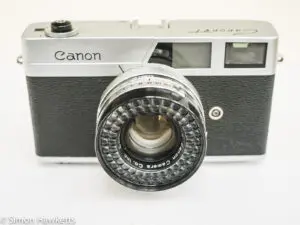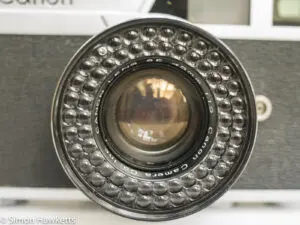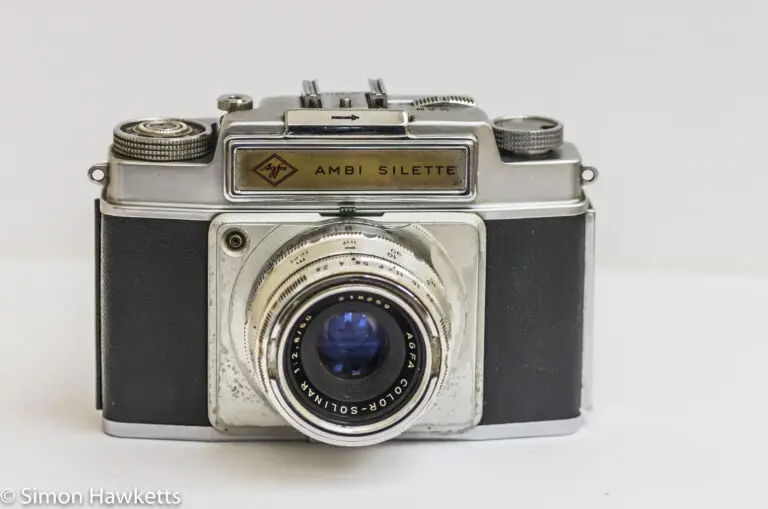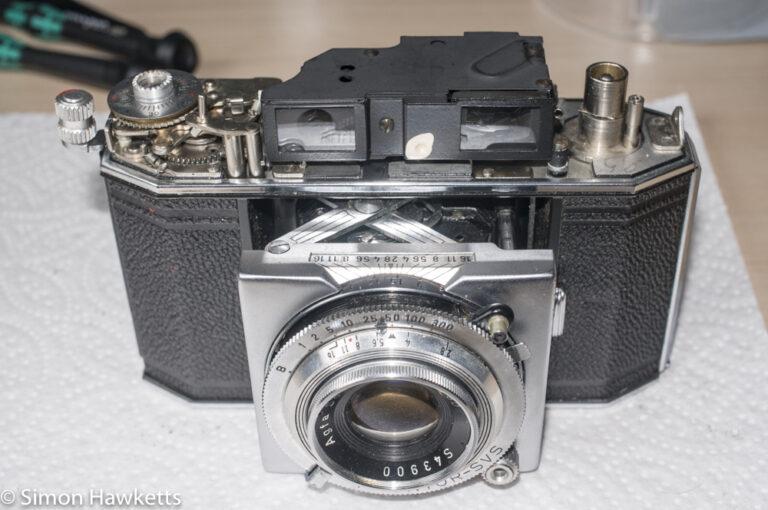Canon Canonet 35 mm rangefinder
This Canon Canonet, made in about 1961, is most notable because it looks a bit upside down compared to most cameras. The film rewind and advance are both mounted on the bottom of the camera, leaving the top plate with just the shutter release, frame counter and an inset hot shoe.
Canon Canonet Images
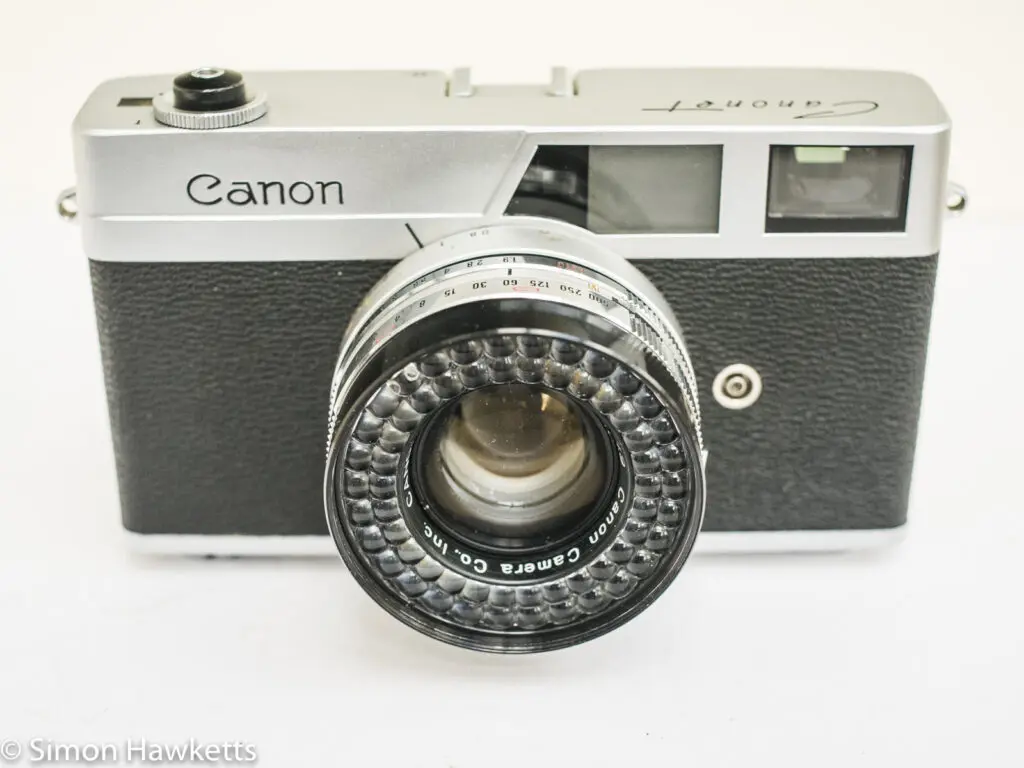

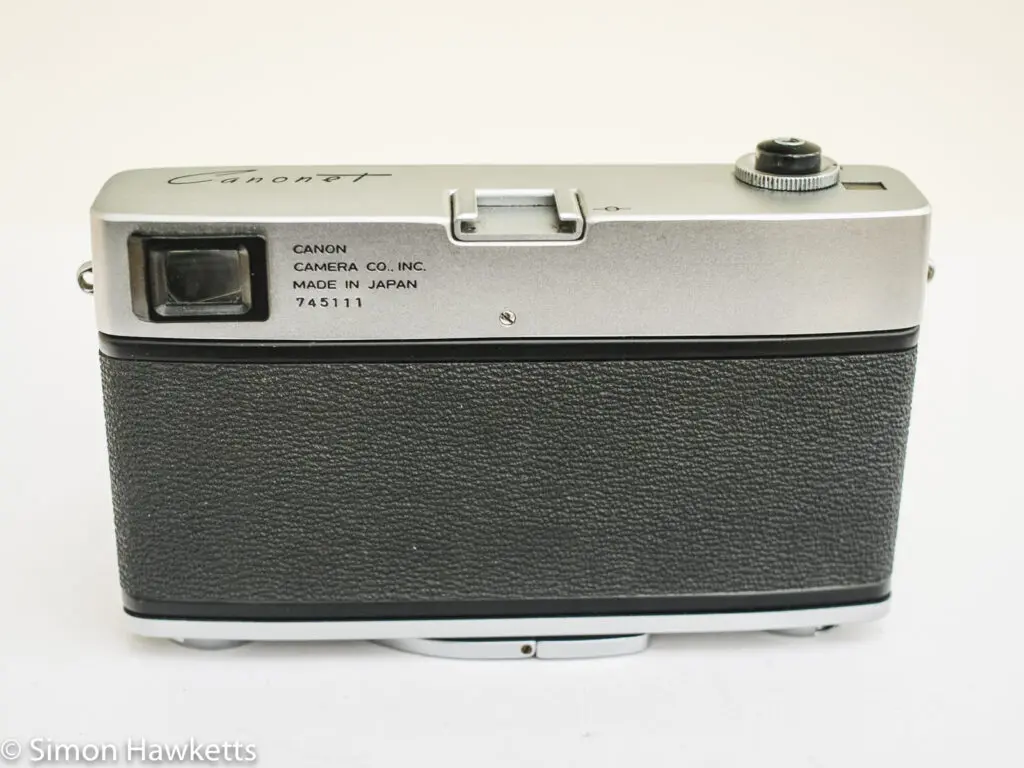
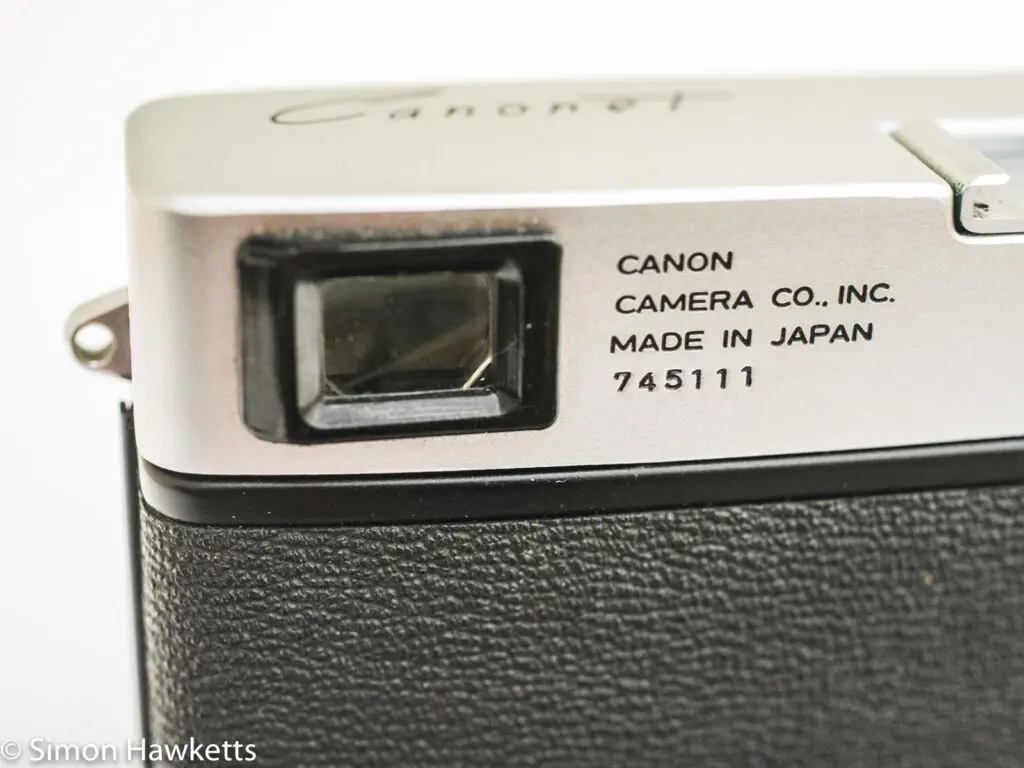
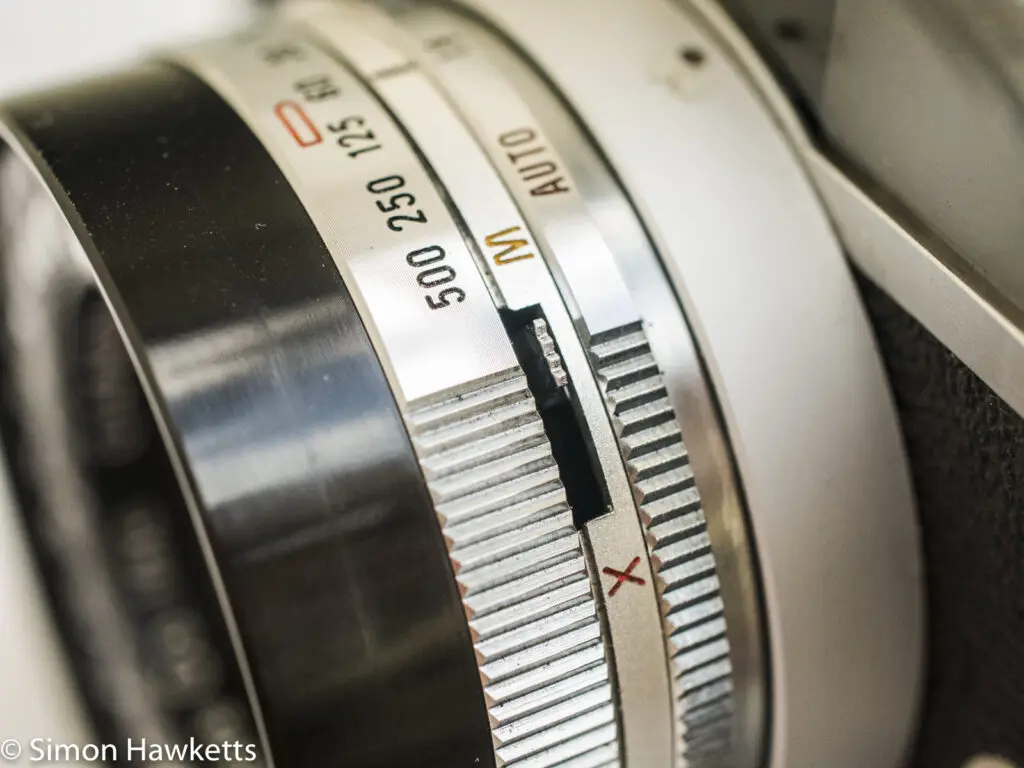
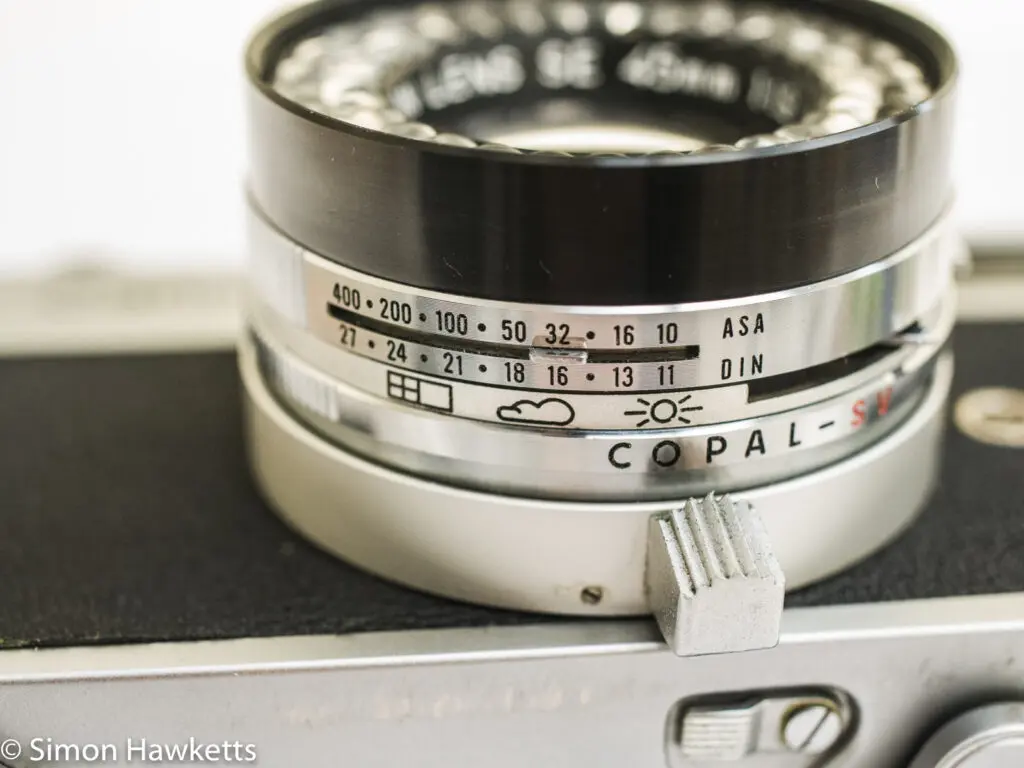
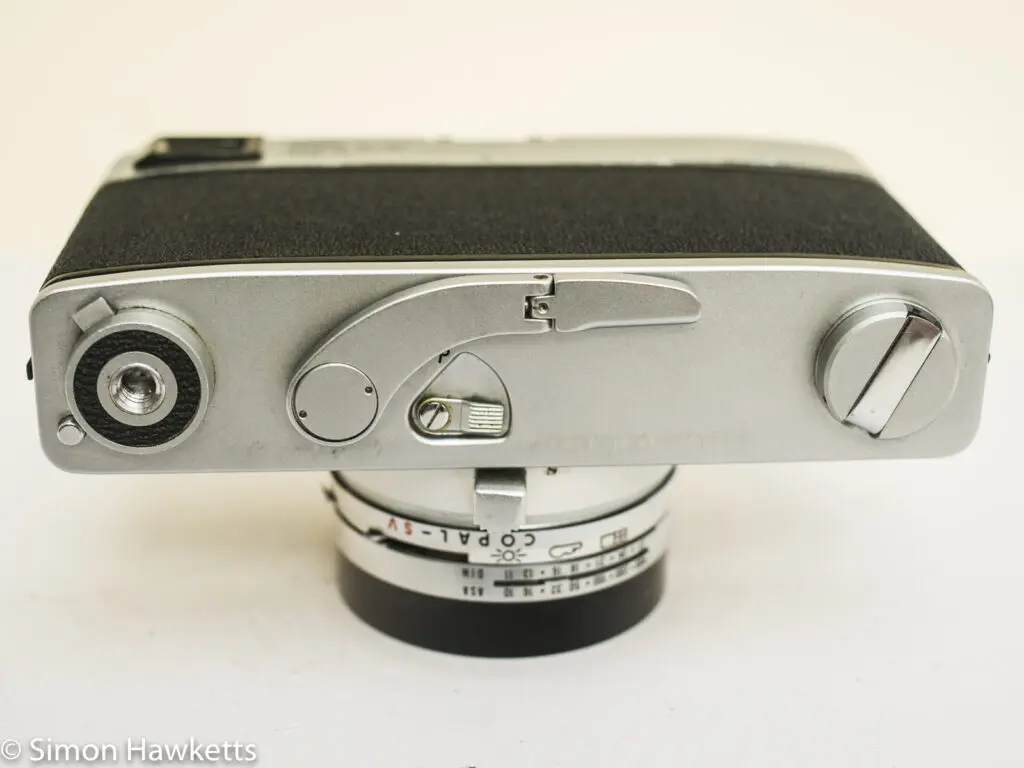
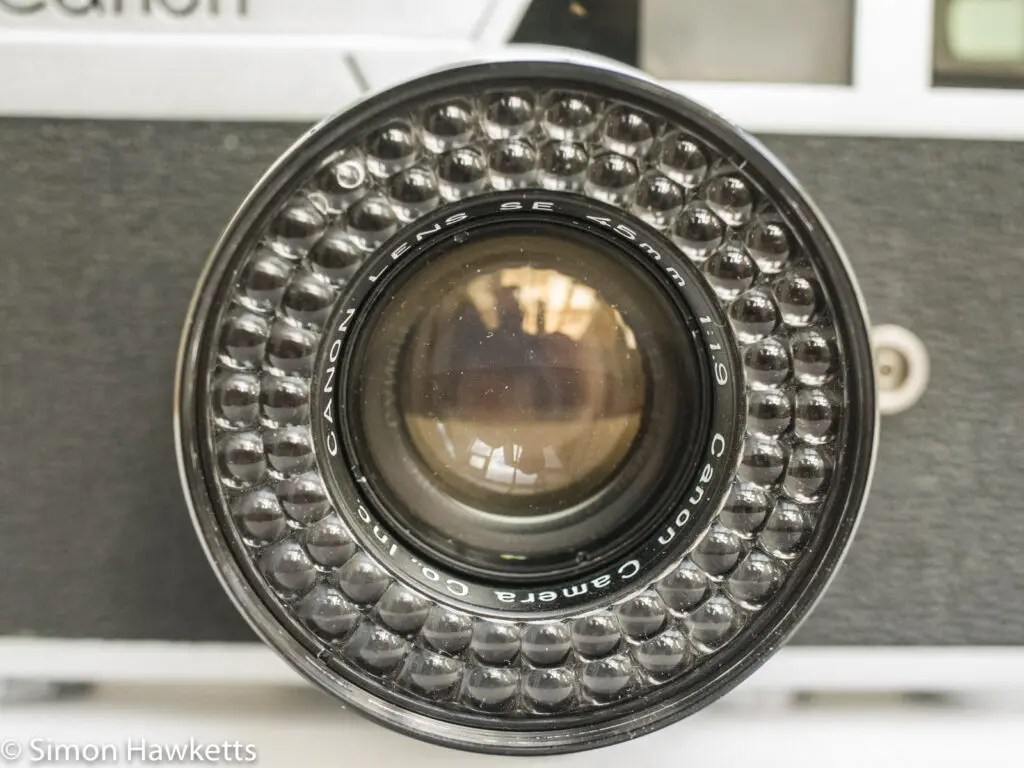
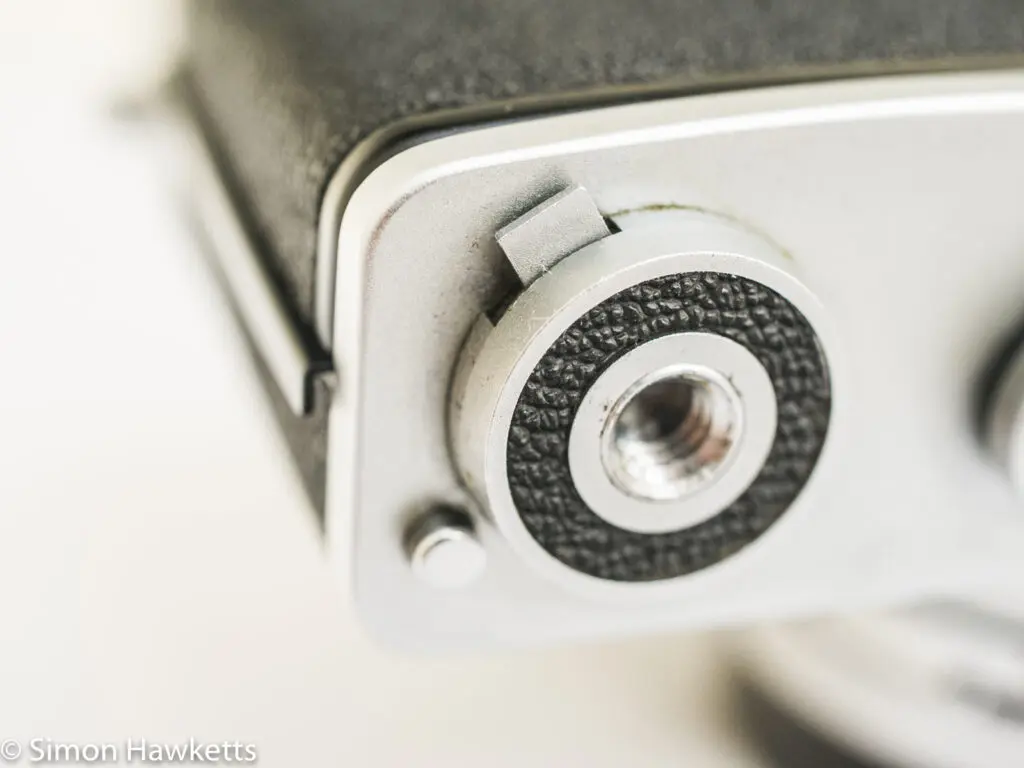
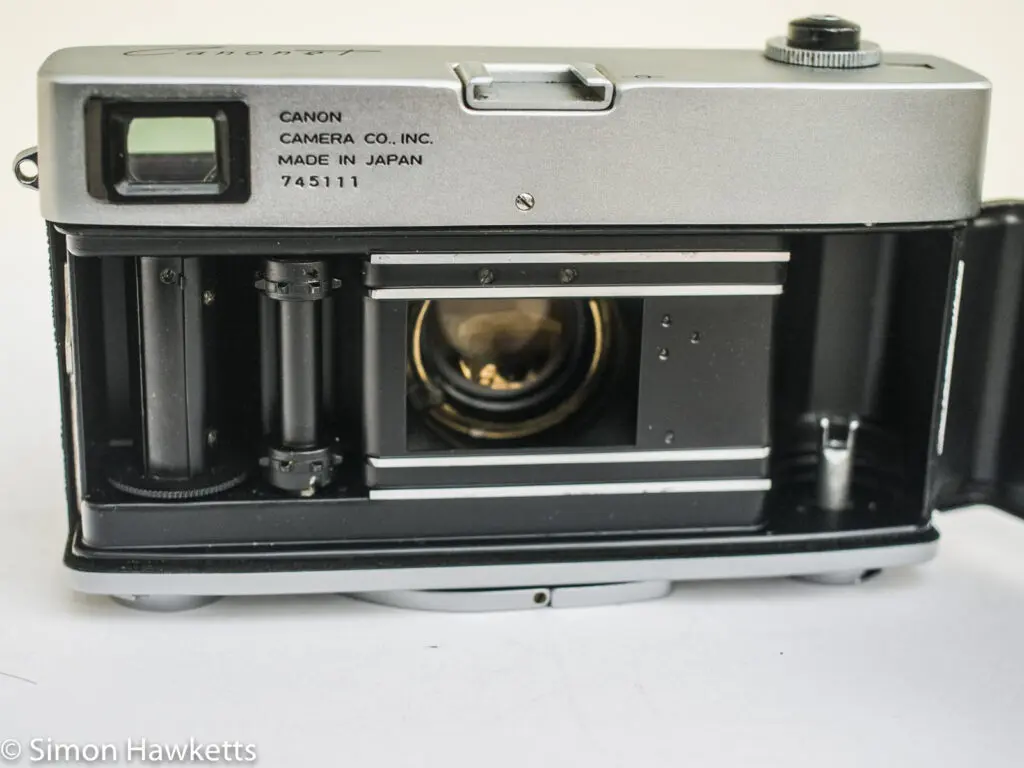
My Canon Canonet Camera
Although I’m not a great fan of Canon cameras generally, an exception to that is the rangefinder series, so when I found this example on eBay for only a couple of pounds I thought I’d try a bid on it. In the end I got it for less than £8 which included the postage, so I think that’s not too much.
The thing that surprised me most when it turned up was the size of the camera. It’s difficult to tell from pictures without any other objects as a reference, but I’d always assumed the Canonet series of cameras were really small, similar in size to the Minolta Hi-matic range, but this camera is in fact more like the size of a small SLR – say the Pentax ME. I wonder if later cameras in the canonet series were smaller?
The camera was sold as seen, so I didn’t know if it would work or not when I received it, and it turns out to have a few issues – all typical of cameras of this age. The most noticeable problem is that the shutter is sticky when the speed is set below 1/8sec, although above that they seem reasonably reliable. I think the light cell is also probably no good because in Auto mode the aperture doesn’t change with the lighting conditions, although it does in manual mode when adjusted. Finally, the self-timer lever is completely stuck and I haven’t tried to force it.
When it comes to the overall cosmetic condition, however, the camera is just about perfect. There is some marking on the bottom of the camera at the front, but just about everything else looks very clean and serviceable.
Canon Canonet Description
This is a 35 mm camera with a fixed lens, manual & automatic exposure system, rangefinder focusing, flash sync and self-timer. It was the first model in a series which Canon continued to sell through to the mid 1970s and was a very popular camera.
The exposure system offered both manual exposure and shutter priority automatic exposure. In automatic mode, the aperture the camera will select is displayed on a scale at the bottom of the viewfinder, and if the correct exposure would be outside the range available, the camera will lock the shutter, so the picture isn’t taken.
The lens fitted is a 45 mm Canon f/1.9 which is a pretty fast aperture and would allow photography in most situations. The aperture can be stopped down to f/16, and the light meter film speed range can be set from ASA 10 to ASA 400, which was a reasonable range considering the film available in the 1960s.
The focus range is good, allowing objects as close as 0.8M or just under 2 feet to be focused and the focus adjustment itself has a very short range making focusing very rapid.
In use, I find the frame advance on the bottom of the camera to be really awkward to use. Although there is a fold down section of the lever which makes it a bit more convenient, it still feels odd to be using a lever on the bottom of the camera to advance the film, especially using my left hand. It may be something that would be possible to get used to, but so far I’ve found it difficult.
The other thing I find difficult is having the tripod bush off-centre, but that is driven by the position of the frame advance lever.
Canon Canonet Specifications
- 35mm rangefinder camera
- Manufactured about 1961
- Copal shutter with speeds 1 sec to 1/500 sec + B + T lock on shutter release
- Flash sync socket with switch for X or F sync
- Canon 45mm f/1.9 lens
- Aperture range f/1.9 to f/16
- Self Timer
- Manual or Automatic exposure with safety lock in Auto mode
- Frame advance on bottom of camera
- Off Centre tripod mount
- Cold accessory shoe
- Selenium cell round lens (allowing filter compensation automatically)
- In viewfinder display of aperture
- Ser No: 745111
- Manual available on-line here
Discover more from Everything Vintage
Subscribe to get the latest posts sent to your email.

